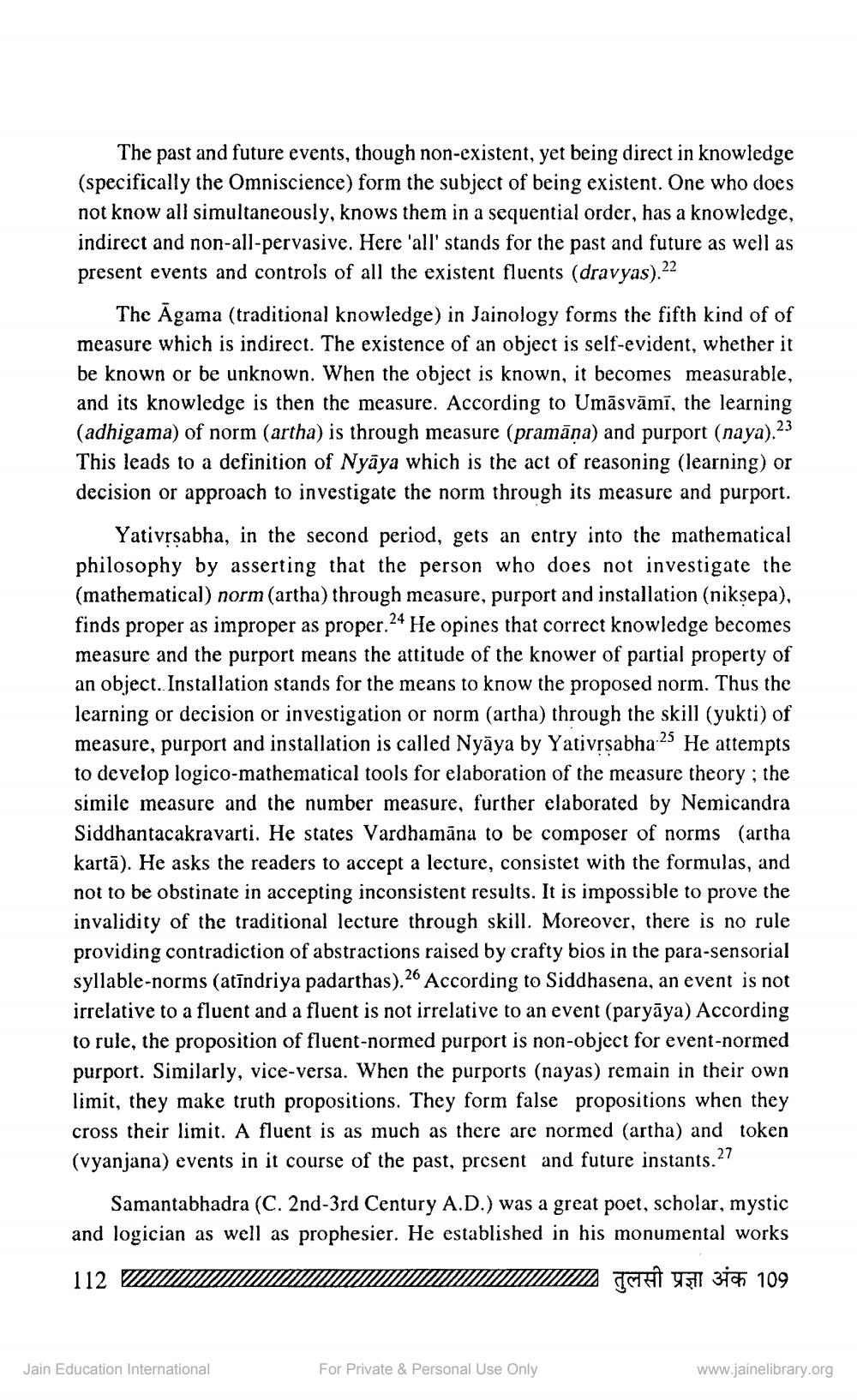________________
The past and future events, though non-existent, yet being direct in knowledge (specifically the Omniscience) form the subject of being existent. One who does not know all simultaneously, knows them in a sequential order, has a knowledge, indirect and non-all-pervasive. Here 'all' stands for the past and future as well as present events and controls of all the existent fluents (dravyas).24
The Āgama (traditional knowledge) in Jainology forms the fifth kind of of measure which is indirect. The existence of an object is self-evident, whether it be known or be unknown. When the object is known, it becomes measurable, and its knowledge is then the measure. According to Umāsvāmī, the learning (adhigama) of norm (artha) is through measure (pramāna) and purport (naya).23 This leads to a definition of Nyāya which is the act of reasoning (learning) or
approach to investigate the norm through its measure and purport.
Yativrsabha, in the second period, gets an entry into the mathematical philosophy by asserting that the person who does not investigate the (mathematical) norm (artha) through measure, purport and installation (niksepa), finds proper as improper as proper.24 He opines that correct knowledge becomes measure and the purport means the attitude of the knower of partial property of an object. Installation stands for the means to know the proposed norm. Thus the learning or decision or investigation or norm (artha) through the skill (yukti) of measure, purport and installation is called Nyāya by Yativrsabha:25 He attempts to develop logico-mathematical tools for elaboration of the measure theory; the simile measure and the number measure, further elaborated by Nemicandra Siddhantacakravarti. He states Vardhamāna to be composer of norms (artha kartā). He asks the readers to accept a lecture, consistet with the formulas, and not to be obstinate in accepting inconsistent results. It is impossible to prove the invalidity of the traditional lecture through skill. Moreover, there is no rule providing contradiction of abstractions raised by crafty bios in the para-sensorial syllable-norms (atīndriya padarthas).26 According to Siddhasena, an event is not irrelative to a fluent and a fluent is not irrelative to an event (paryāya) According to rule, the proposition of fluent-normed purport is non-object for event-normed purport. Similarly, vice-versa. When the purports (nayas) remain in their own limit, they make truth propositions. They form false propositions when they cross their limit. A fluent is as much as there are normed (artha) and token (vyanjana) events in it course of the past, present and future instants.27
Samantabhadra (C. 2nd-3rd Century A.D.) was a great poet, scholar, mystic and logician as well as prophesier. He established in his monumental works
112 VI
N NIZZ TH yg 3ich 109
Jain Education International
For Private & Personal Use Only
www.jainelibrary.org




